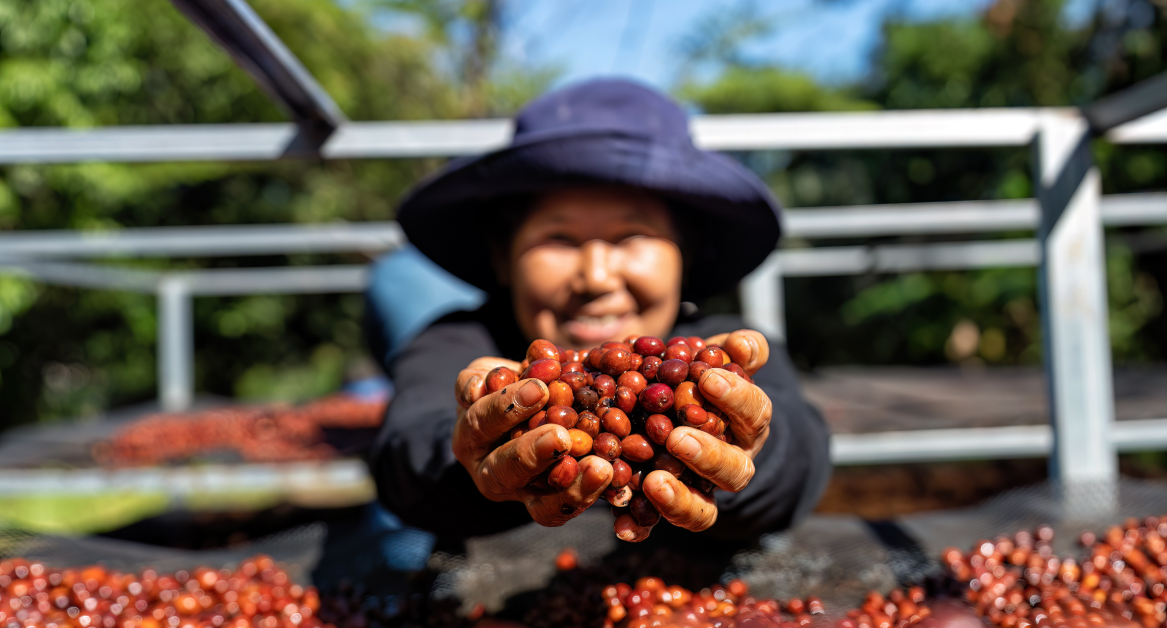PepsiCo, the global food and beverage leader has strived to redefine farming practices under the banner of regenerative agriculture. This initiative is not just about enhancing their supply chain efficiency or meeting market demands; it’s a pledge to profoundly impact the planet.
PepsiCo’s strategy revolves around a holistic approach to regenerative agriculture, aiming to not only improve soil health and water quality, but also reduce greenhouse gas emissions, while ensuring the farmers’ well-being.
By 2040, PepsiCo has set an ambitious goal of achieving net zero emissions, a testament to their commitment to earn the trust of their consumers and stakeholders through responsible and sustainable farming practices.
PepsiCo’s regenerative agriculture strategy
1. Overview of PepsiCo’s sustainability vision
PepsiCo’s commitment to environmental stewardship is anchored in their ambitious goal to achieve net zero emissions by 2040. Guided by their Chief Sustainability Officer – Jim Andrew, the company integrates sustainable practices across its operations, emphasizing the need for a balance between business growth and environmental responsibility.
Regenerative agriculture at PepsiCo is more than a set of practices; it’s a holistic approach that intertwines with the company’s core operations. PepsiCo’s strategy encompasses various practices aimed at revitalizing the soil, conserving water, and ultimately creating a more sustainable ecosystem
2. Core elements of PepsiCo’s regenerative agriculture strategy
PepsiCo’s regenerative agriculture strategy is centered around two key areas: improving soil health and water quality, and reducing greenhouse gas emissions. Each area is broken down further to understand PepsiCo’s specific practices and goals.

Improving soil health and water quality
- Soil conservation techniques: PepsiCo implements practices like crop rotation, cover cropping, and reduced tillage to prevent soil erosion, maintain fertility, and increase biodiversity.
- Water efficiency: The company adopts efficient irrigation systems, which include advanced technologies for water conservation. They also focus on managing water runoff to prevent water pollution and preserve water quality in farming communities.
Reducing greenhouse gas emissions
- Carbon sequestration in soil: By adopting practices like planting cover crops and minimizing soil disturbance, PepsiCo enhances the soil’s ability to capture and store carbon, thereby reducing atmospheric carbon levels.
- Sustainable farming equipment and practices: PepsiCo is moving towards using farming equipment that is more energy-efficient and emits fewer greenhouse gases. They also encourage practices that reduce the need for synthetic fertilizers, which are a significant source of greenhouse gas emissions in agriculture.
3. Achieving tangible results
PepsiCo’s commitment to regenerative agriculture is not just theoretical; it has yielded tangible results.
PepsiCo’s Positive Agriculture Outcomes (PAO) Accelerator, launched in 2021, has been pivotal in advancing regenerative agriculture. With over $30 million in investments, it supports nearly 40 projects globally through 2028. The program focuses on diverse initiatives, including soil health, efficient irrigation, and reducing greenhouse gas emissions, involving farmers across several countries.
Key projects include collaboration with Australian grain growers, installation of sprinkler systems in Colombia, and partnerships with European organizations. This initiative is part of PepsiCo’s larger goal to extend regenerative practices across 7 million acres by 2030, improving livelihoods and sustainably sourcing key ingredients.
Collaboration and partnerships
PepsiCo’s regenerative agriculture initiatives are bolstered by significant collaborations and partnerships, each playing a crucial role in advancing sustainable practices in agriculture.
Collaboration: PepsiCo and Walmart regenerative agriculture practices
- A groundbreaking collaboration: PepsiCo and Walmart have announced a 7-year collaboration, with a commitment of $120 million towards supporting U.S. and Canadian farmers in regenerative agriculture. This initiative aims to impact more than 2 million acres of farmland and achieve approximately 4 million metric tons of greenhouse gas emission reductions by 2030.
- Farmer-centric approach: Jeff Huffman, a farmer from Nebraska, emphasized the practical benefits of this collaboration, noting that adopting regenerative practices enhances both environmental sustainability and farm profitability.
- Diverse and adaptive strategies: PepsiCo and Walmart recognize the diversity in agriculture, offering a flexible, voluntary approach to regenerative practices, catering to the unique needs of different crops and regions.
- Trust and support: Jim Andrew, PepsiCo’s Chief Sustainability Officer, highlighted the importance of building trust with farmers, offering them economic, social, cultural, and agronomic support. This strategic collaboration aims to back farmers in transforming farming for the benefit of the planet and people.
- Walmart’s sustainability vision: Jane Ewing, Senior Vice President for sustainability at Walmart, stated that the collaboration aligns with Walmart’s strategy to make sustainable choices more accessible to customers, focusing on soil health, yields, and creating a scalable model for regenerative agriculture.
Partnership: PepsiCo’s $216 million investment in U.S. regenerative agriculture
- Extensive investment and scope: PepsiCo plans to invest $216 million in regenerative agriculture projects covering 3 million acres of U.S. farmland. This initiative involves partnerships with organizations like Practical Farmers of Iowa, Soil and Water Outcomes Fund, and the IL Corn Growers Association.
- Direct support to farmers: The funding is designed to directly benefit farmers, covering costs for seeds, education, and outcomes-based payments linked to environmental improvements. The goal is to make these projects self-sustaining, yielding benefits such as nitrogen reduction and healthier soil.
- Three-legged stool model: PepsiCo views the adoption of regenerative practices as a three-legged stool, requiring time, agronomic advice, and cultural shifts. This model aims to address the hesitancy among farmers to adopt new practices by providing comprehensive support.
- Measurable outcomes: PepsiCo’s focus is on measurable improvements in carbon sequestration, soil health, biodiversity, watershed health, and farmer livelihoods.
- Collaborative approach and targets: PepsiCo collaborates with various stakeholders to ensure consistency in measuring regenerative practices. By 2030, they aim to reach millions of acres in partnership with their associates, contributing significantly to their goal of spreading regenerative agriculture over 7 million acres.
These collaborations and partnerships are critical in advancing PepsiCo’s regenerative agriculture goals, demonstrating the company’s commitment to a sustainable and resilient food system.
Regenerative agriculture scheme rules
PepsiCo’s Regenerative Agriculture Scheme Rules serve as a foundational framework, guiding the implementation of the company’s ambitious Regenerative Agriculture (Regen Ag) goal.
Key focus areas of the scheme
PepsiCo’s Regenerative Agriculture Scheme prioritizes several key areas, reflecting the company’s commitment to integrating sustainable practices throughout its global supply chain:
- Soil health: The scheme emphasizes building the health and fertility of the soil to support both the above and below-ground ecosystem, thereby increasing farm resilience.
- Climate mitigation and adaptation: A major focus is on increasing resilience to climate change impacts, sequestering carbon, and reducing emissions to align with PepsiCo’s greenhouse gas targets.
- Watershed health: The initiative aims to improve watershed health by reducing nutrient runoff and minimizing the quantity of water needed for farms and communities.
- Biodiversity: Protecting and improving biodiversity is a key objective, including forest conservation and restoration, support for pollinators, and enhancing the soil microbiome.
- Livelihoods & women’s empowerment: Aligning with PepsiCo’s Livelihoods Improvement Framework for Engagement (LIFE), the scheme seeks to improve the livelihoods of vulnerable farming communities, with a focus on smallholder farmers, farm workers, women in farming communities, and medium to large scale farmers.
Three-legged stool approach to implementation
The successful implementation of PepsiCo’s Regenerative Agriculture Scheme rests on a ‘three-legged stool’ approach, encompassing:
- Expert agronomic support: Recognizing the challenges of implementing regenerative practices, PepsiCo emphasizes the need for expert agronomic advice. This support ensures that changes to farming operations do not harm yields and are well-integrated into various farming operations.
- Financial support: The scheme acknowledges the upfront costs and the transition period before regenerative practices become profitable. Financial support is thus a critical element, easing the transition for farmers.
- Cultural support: Understanding that farmers are most familiar with their context, the scheme emphasizes the importance of peer learning and community support in the adoption of new practices. The ‘seat’ of the stool is a robust data management system (MMRV) for accurate and credible reporting of impacts, ensuring farmer data ownership and confidentiality.
Join the Regen Ag movement in Asia with RegenX
In conclusion, PepsiCo’s Regenerative Agriculture Strategy and Scheme Rules mark a significant step towards sustainable agriculture. Their comprehensive approach, focusing on soil health, climate action, and community empowerment, is what RegenX want to replicate for the food sourcing supply chain in Aisa.
At RegenX, we are continuously working to refine regenerative practices and de-risk financing, thereby fostering a new basket of investment for eco-investors around the globe to push the Regen Ag movement in Asia. Furthermore, we measure our impact not only in financial returns but also in tangible environmental and social improvements, with a comprehensive bird-eye-view dashboard.



